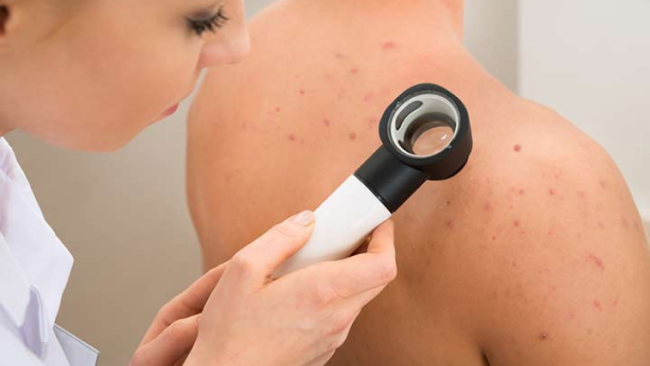Finding skin cancer early gives you the best chance of successful treatment. It is important that you know your skin well so you can notice any changes early. It is recommended that you check all of your skin regularly and see your doctor as soon as possible if you notice any changes.
Cancer Council recommends that:
- the general public, particularly those aged 40 and over, check all areas of their skin, including skin not normally exposed to the sun. Look for changes in shape, colour or size of a pigmented lesion or a new lesion regularly. Individuals should seek assistance from others to check difficult to see areas such as their back.
- individuals who are concerned about skin cancer risk or skin changes should seek advice from a medical practitioner and discuss their risk and the need for medical checks or self-examination.
- outdoor workers should be encouraged to regularly check their skin for suspicious spots. It is important that workers know what their skin looks like normally so changes will be noticed.
Checking for skin cancer
Different skin cancers behave differently so when checking your skin it is important to include your whole body. A squamous cell carcinoma is likely to develop on skin most often exposed to the sun, such as the face and forearms. A melanoma can develop anywhere, even on areas not exposed to sunlight.
How to check your skin
Everyone can check their own skin. It helps to have someone assist you with those difficult to see places. If you have a partner or someone you feel comfortable with, ask them to help you.
With a bit of practice most people can check their whole body in 15 minutes. Why not check your skin when you are getting dressed or getting out of the shower?
When you examine your skin you will need a full length mirror and a hand-held mirror. You will need to undress completely. The room you use will need to be well lit.
There is no specific skin examination method; the following steps are suggested by the Australasian College of Dermatologists.
Face, head and neck
- Check your whole face including around the nose, lips and ears.
- The scalp can be difficult to examine. Make sure you part your hair. Try using a hand-held blow dryer or a comb to lift the hair from the scalp or ask your partner or friend to help.
- Turn your back to the full-length mirror and use your hand-held mirror to check the back of your neck and ears.
Torso – front, back and sides
- Raise your arms and look at your right and left side.
Arms and hands
- Hold your hands with the palms face up. Look at your fingers and spaces between the fingers.
- Turn your hand over and examine the backs of your hands, fingers, spaces between the fingers and fingernails.
- Face the mirror and look at your forearms and upper arms. Bend elbows to look at the undersides.
Legs and buttocks
- With your back towards the full-length mirror, look at your buttocks and the backs of your thighs and lower legs.
- Turn and face the mirror and check the front of your thighs and lower legs.
- Sit down and cross one leg over the other. Examine the top of your foot, the toes, toenails and spaces between the toes. Then use the hand-held mirror to look at the sole or bottom of your foot. Repeat the step with your other foot.
